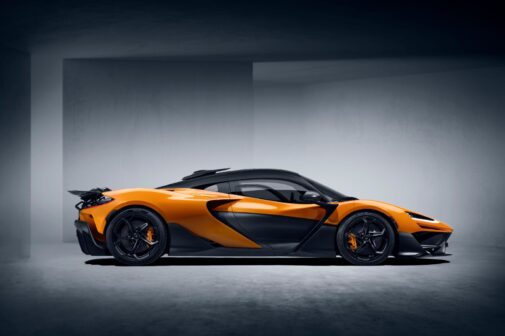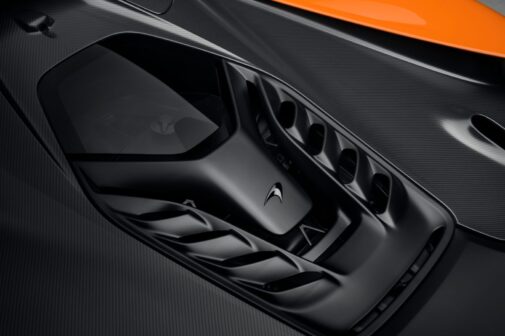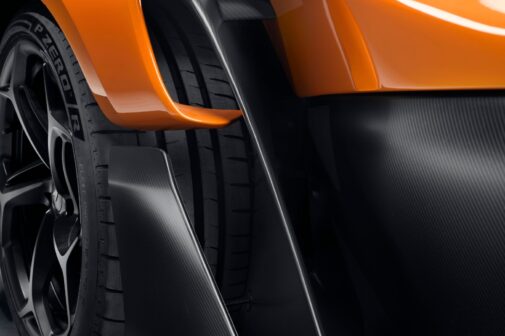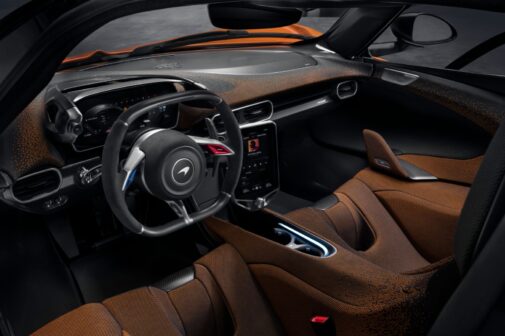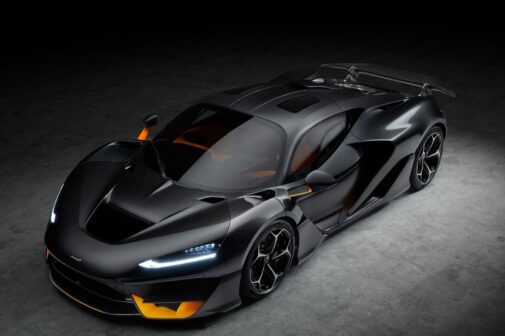The McLaren W1 promises to be a masterpiece, blending extreme power with cutting-edge technology. This machine feels like it came straight out of Doc Ock’s lab. I can hear spiderman swinging in to save the day, well, truth be told, he would stand in shock and awe as we did, when we saw this!
Now, let’s return to that Doc Ock reference—here’s why. The W1 accelerates from 0-100 kph in just 2.7 seconds and from 0-200 kph in 5.8 seconds. Additionally, its top speed reaches an electronically limited 350 kph, and it hits 300 kph in under 12.7 seconds.
How does one stop this? Well, McLaren has a good solution for that too with its Carbon Ceramic Racing+ braking system. This system comes equipped with 390mm discs and forged Monobloc callipers, which solve the stopping equation.
Numbers? The W1 can decelerate from 200-0 kph in 100 metres and from 100-0 kph in just 29 metres.
However, power isn’t its only function! The lightweight design, nearly entirely made from carbon fibre, combined with an advanced aerodynamic package inspired by Formula One, ensures it excels beyond just straight-line speed.
The active front wing, rear spoiler, and ground effects generate 1,000 kg of downforce at 280 kph, with 350 kg at the front and 650 kg at the rear. Thanks to hydraulic steering and braking systems, the W1 should provide a tactile and engaging driving experience.
McLaren’s engineering prowess in the chassis features the Aerocell system, inboard active heave suspension, and double wishbone suspension at both the front and rear.
The W1 rides on Pirelli P Zero or Trofeo RS tyres, with 19-inch front wheels and 20-inch rear wheels. Quite tasteful with the aero-package.
On the interior front, the car feels like a standard McLaren, and that is not a bad thing! Here’s why: you get fixed seats and raised footwells, giving you Ayrton Senna vibes.
The steering rack has been repositioned closer to the wheel’s centre, maintaining geometry in both road and Race modes while retaining McLaren’s distinctive hydraulic steering feel.
The optional integral shift lights prompt the driver to select the next gear as the 9,200 rpm redline approaches.
The driver can adjust the chassis and powertrain modes via rocker switches on top of the instrument binnacle, which moves with the steering column, keeping mode adjustments within reach.
Between the fixed seats, a storage area with a sliding cupholder provides convenient access, while a second area behind the armrest accommodates small items.










